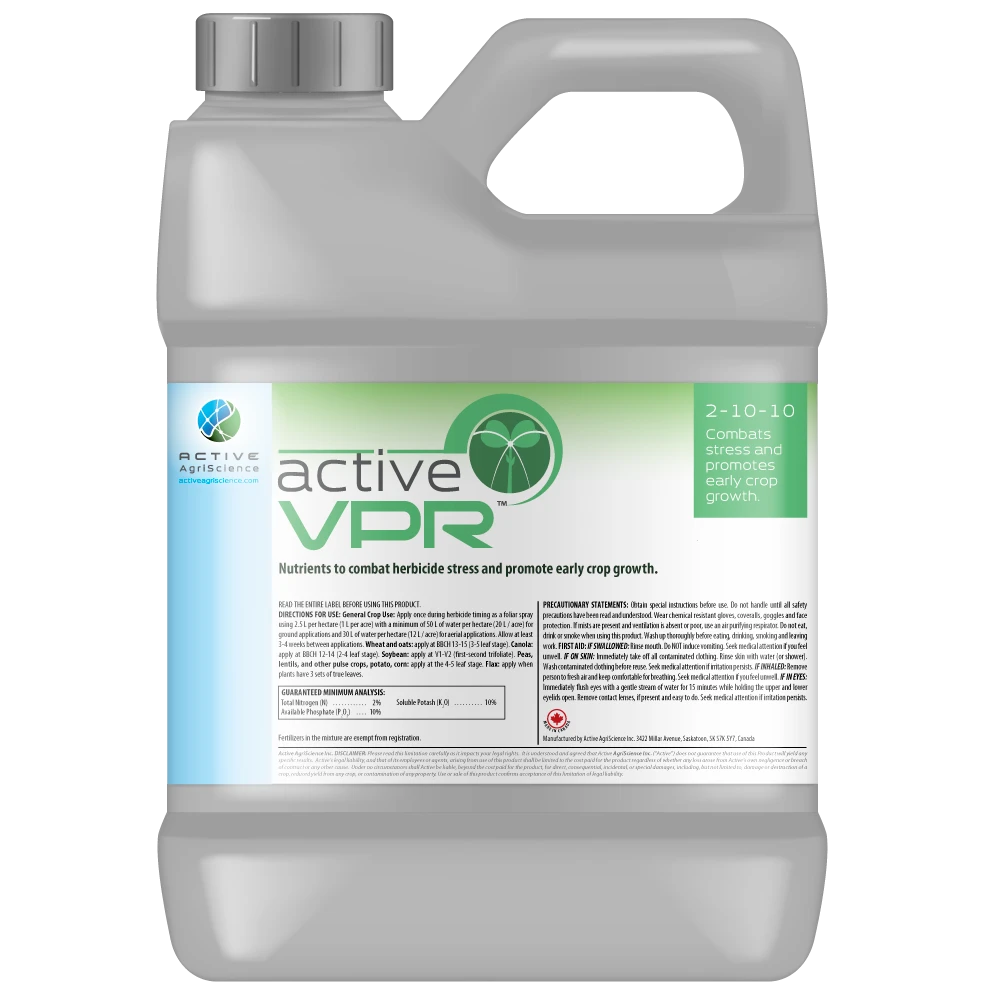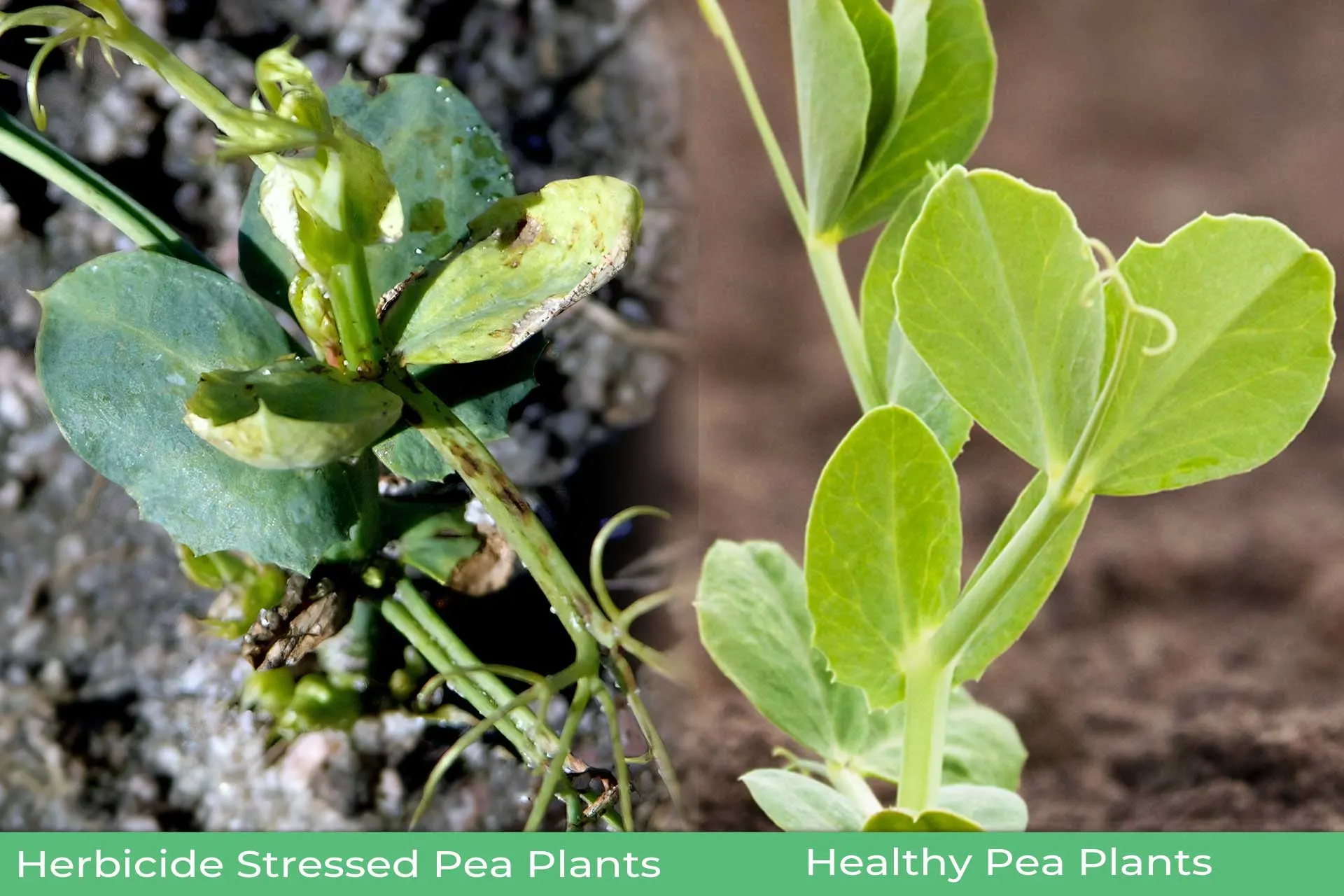
Weeds: one of the many stressors detrimental to crop growth. As your plants emerge from the soil the last thing it needs is competition with unwanted volunteers for sunlight, water and nutrients. At this early stage in plant growth, selective herbicides are often the most effective way to deal with weeds. Selective herbicides are designed to suppress weeds while leaving the target crop unharmed. These herbicides may not cause visible damage to your crop, but they still cause herbicide stress which can set the plant back during a critical stage of growth.
On this page
Post-Emergent Herbicides
Viper ADV, Python, Basagran and Basagran Forte are some of the most popular post-emergent herbicides for field peas, soybeans, and dry, edible beans. These herbicides are designed to combat both broad leaf and grass type pests without affecting legume crops. Herbicides in this chemical class usually require UAN 28% (urea-ammonium-nitrate) as a tank mix partner for optimal herbicide efficacy. UAN improves herbicide absorption in weeds by reducing the leaf’s surface tension. The reduced tension also allows herbicide molecules to spread and affect a greater surface area on the leaf.
Herbicide Stress
Selective herbicides are designed so specific crops can convert it into a form that has no herbicidal effect. For example, Viper ADV can be metabolised by legume plants while inhibiting the growth of weeds. The purpose is to allow farmers to easily spray their entire field with herbicide and not have to worry about damaging their crop.
However, to convert herbicide into safe components the crop spends energy and nutrients that would be better utilized for crop growth. Having to metabolise the herbicide actually sets the crop back from its normal activity during a critical stage of development.
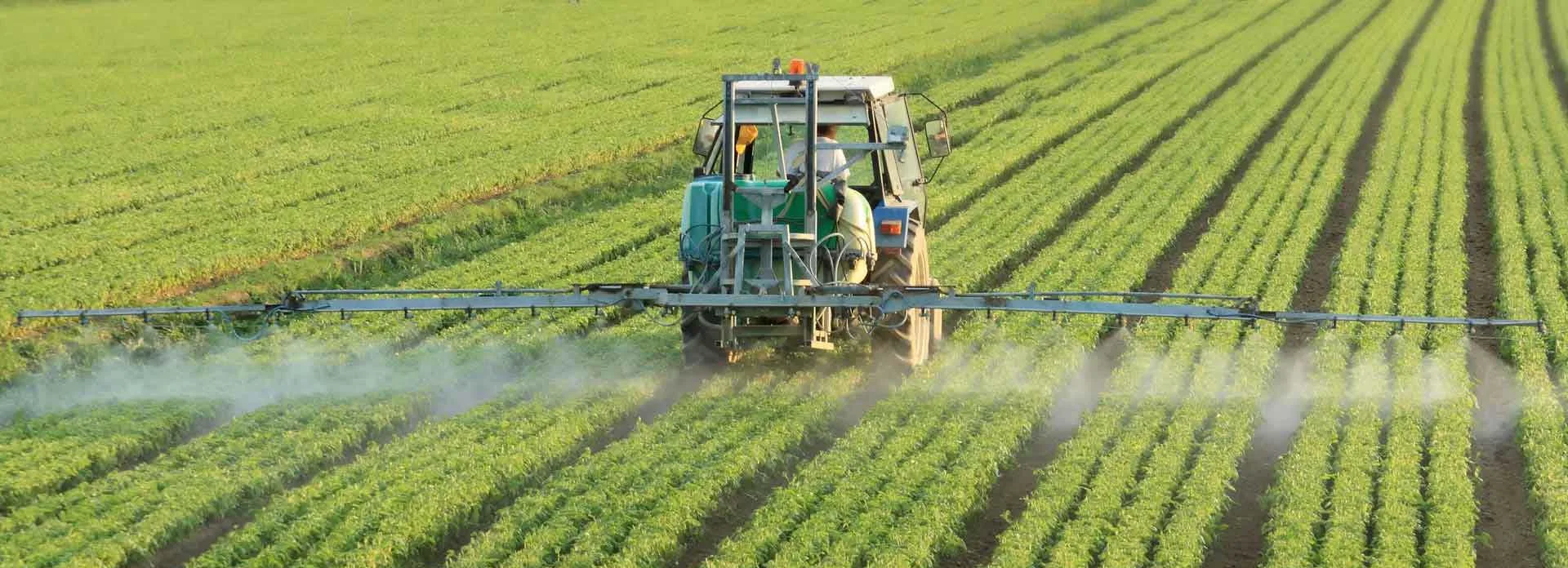
Active VPR
Active VPR is a high-quality, foliar fertilizer tailored to reduce herbicide stress and promote early growth in legumes. Active VPR replaces nutrients the crop uses to metabolise herbicide, drastically improving root growth, environmental stress resistance, and translocation of sugars. Active VPR is fully compatible with the post-emergent herbicides Viper ADV, Python, Basagran and Basagran Forte.

Active VPR PLUS
To enhance Active VPR’s ease of use and effectiveness, Active AgriScience developed a new product, Active VPR PLUS. Active VPR PLUS has the same qualities as Active VPR with added Urea-Potassium Phosphate to effectively replace UAN as tank mix partner. Active VPR PLUS provides a superior nutrient composition (14-10-10) versus UAN (28-0-0) and is an economical option to provide all three macro elements during the early stage of crop growth.

Compatibility Testing
In a field spray simulation setup, Viper ADV and Active VPR PLUS was assessed for compatibility. Components of the mixture included 400L of irrigation water, 4.05L of Viper ADV herbicide, and 10L of Active VPR PLUS added in that order.
The Viper ADV label recommends adding UAN 28% at a rate of 2L per hectare. In this experiment, Active VPR PLUS was added at a rate of 2.5L per hectare. The total mixture would treat 10 acres (4.05 ha) of crop.
After three hours of mixing Viper ADV and Active VPR PLUS, the spray mixture remained clear with no signs of incompatibilities and the spray filters showed no signs of sediment build up.
Field Trials
In a third-party field experiment conducted by New Era Ag Technologies, Viper ADV + Active VPR PLUS effectiveness was compared with Viper ADV + UAN + Active VPR and Viper ADV + UAN. The objective of the trial was to see if replacing UAN as a tank mix partner with Active VPR PLUS would change the effectiveness of the herbicide. The trial was conducted in Swan River, Manitoba and tested rows were infected with canola volunteers.
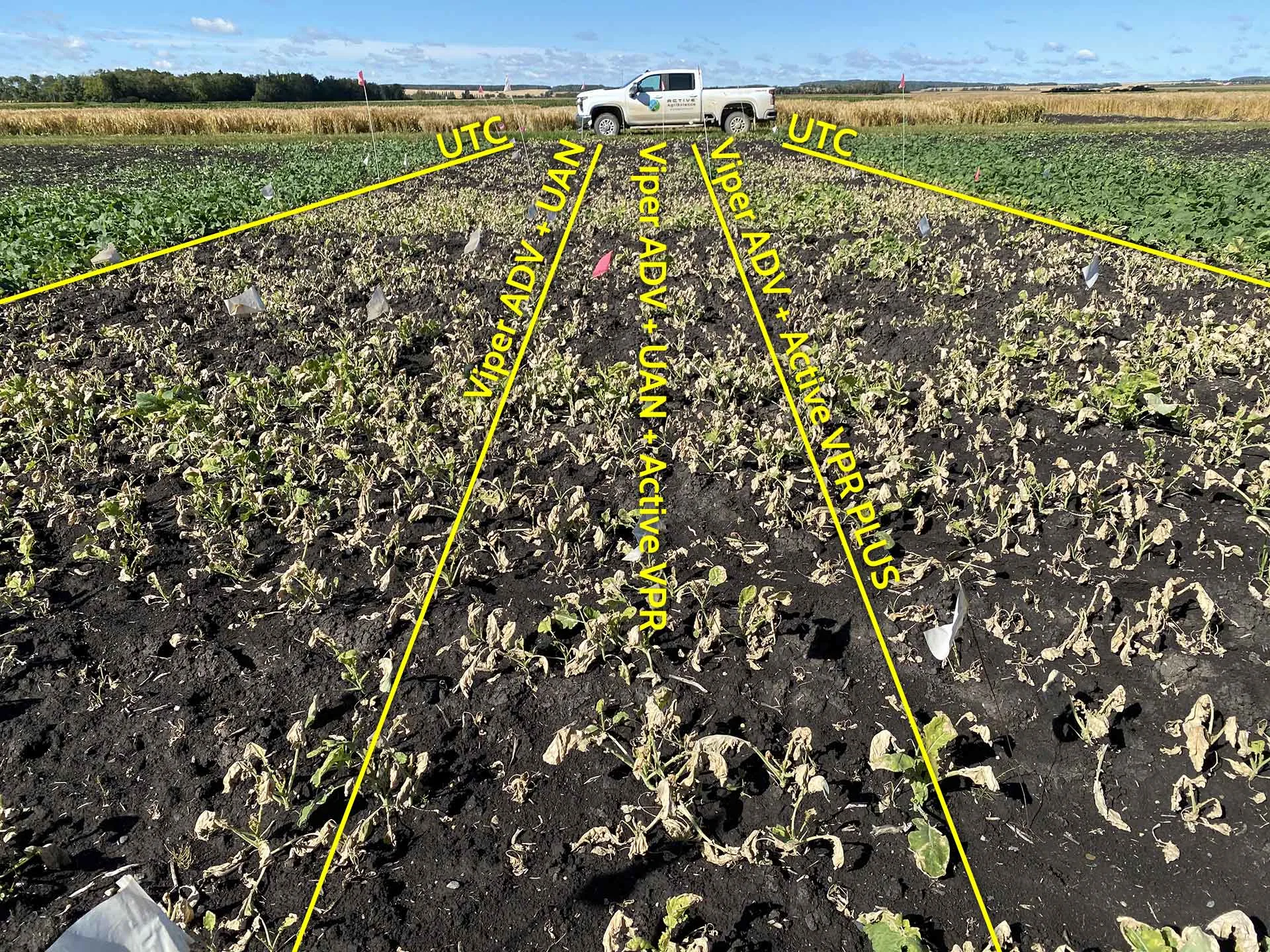
After ten days, plots treated with all three tank mixes had equal herbicidal activity on the canola volunteers. The field efficacy trials show that Active VPR PLUS enhances Viper ADV efficacy just as well as UAN.
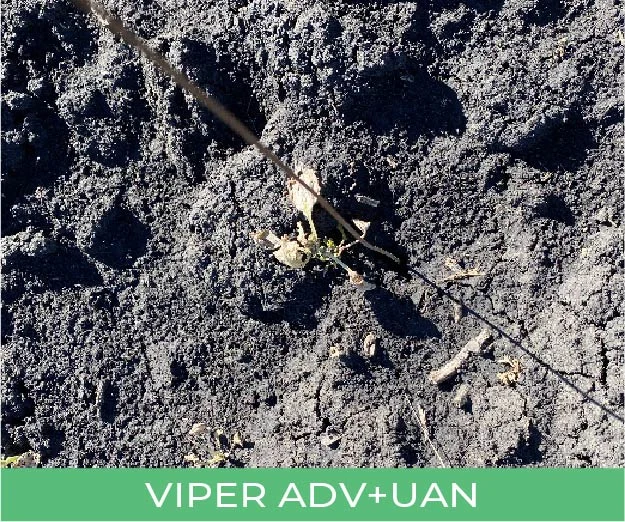
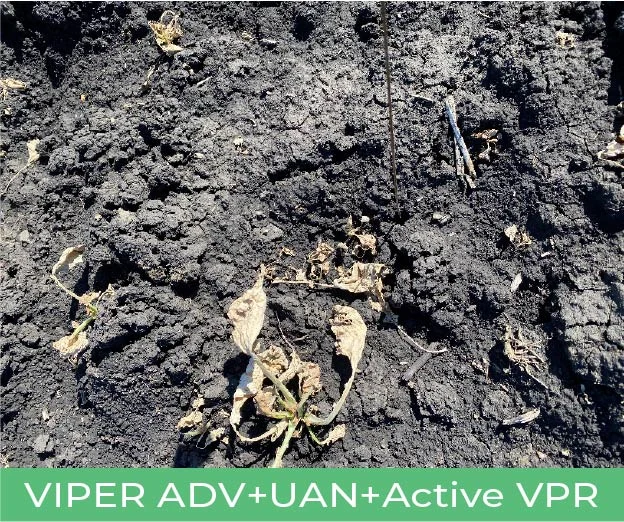
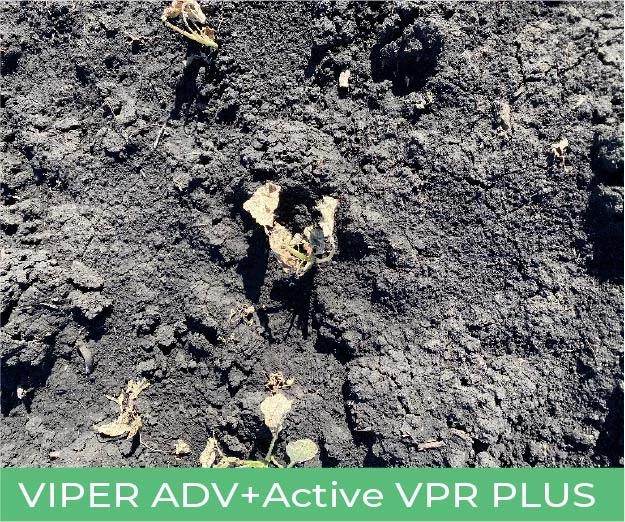
A further trial was conducted on field peas at the three-node stage with canola volunteers. All of the plots treated had 100% control over weed infestations and the peas treated with Active VPR or Active VPR PLUS showed signs of improved plant growth.
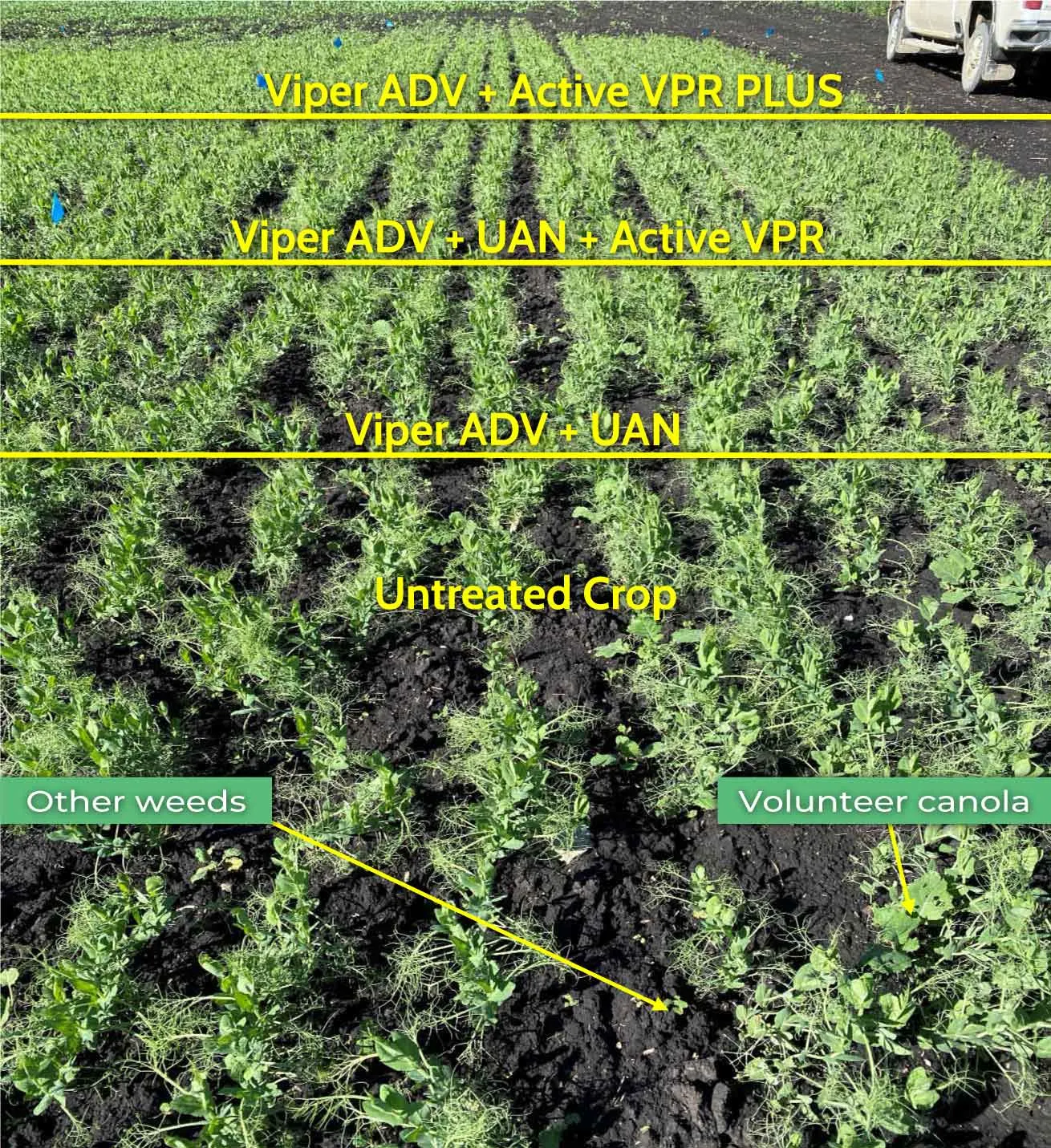
Herbicides play a significant part in large scale agricultural weed management, but herbicide stress should not be overlooked. Active VPR and VPR PLUS promote robust, early growth and help combat the diminishing effects of herbicide stress. To learn more about how Active VPR or Active VPR PLUS is an essential tank mix partner for post-emergent herbicides, please visit activeagri.com/active-vpr or activeagri.com/active-vpr-plus.
